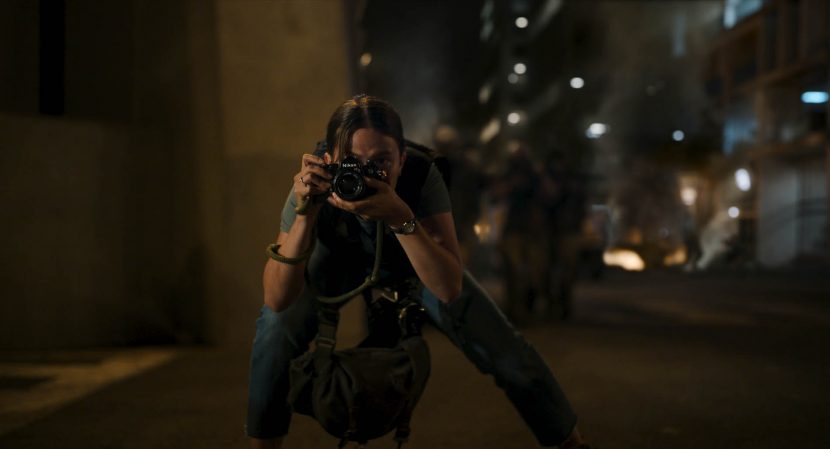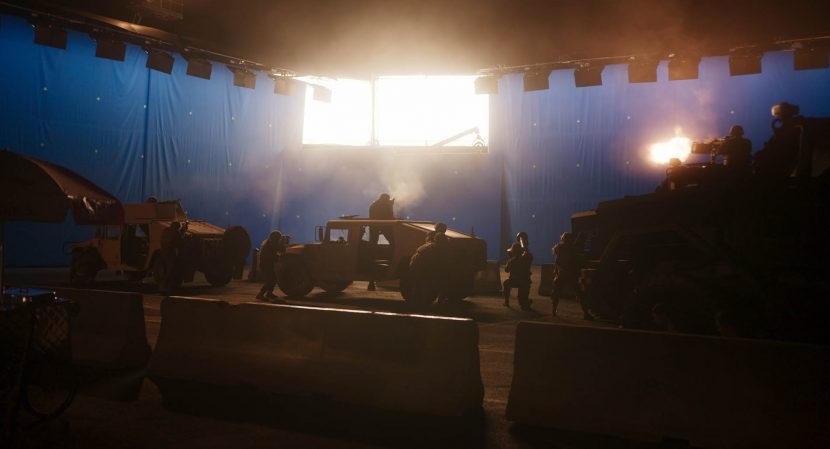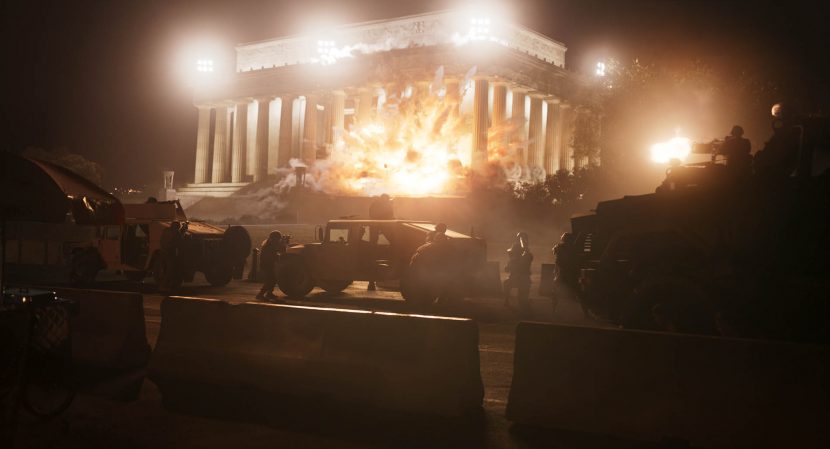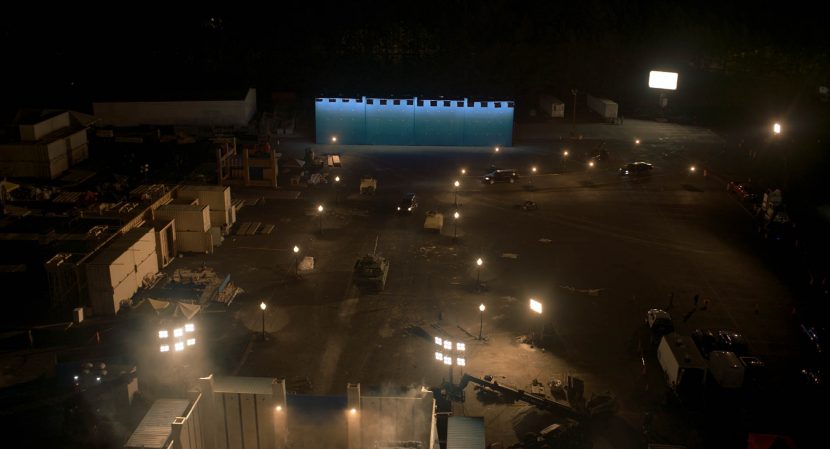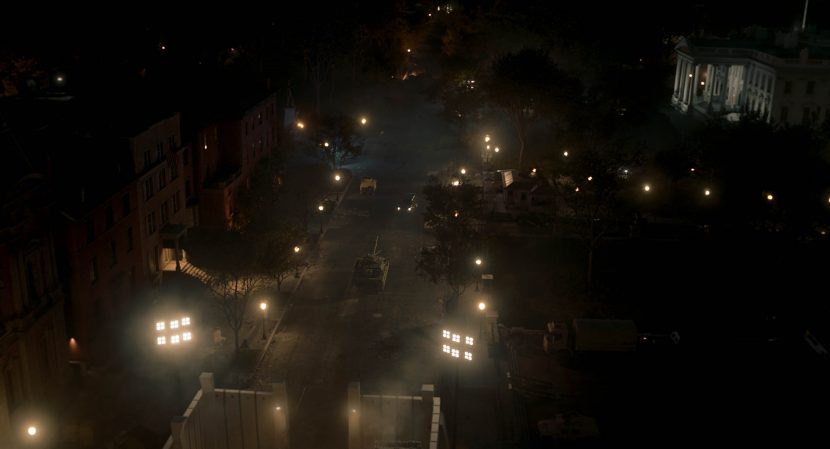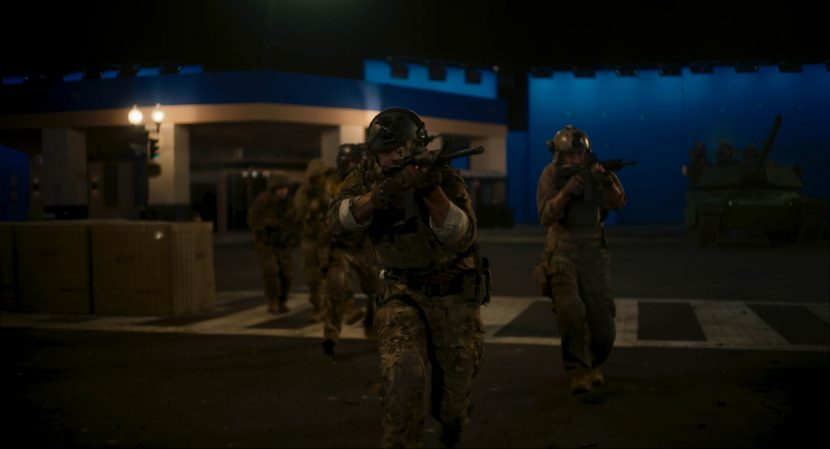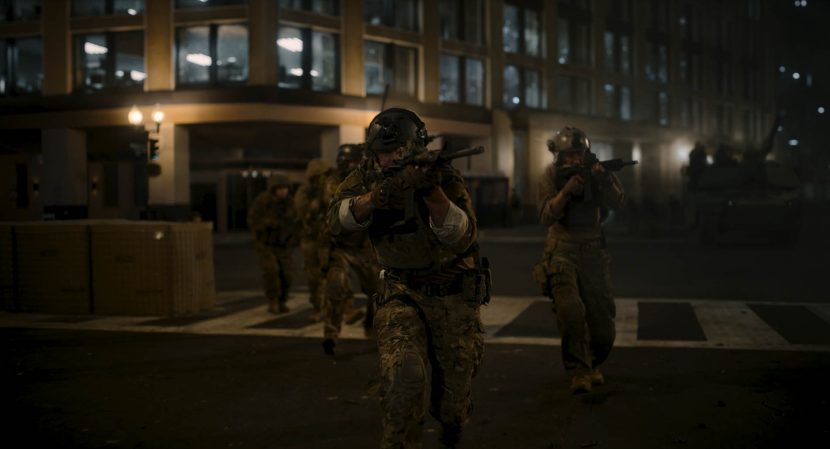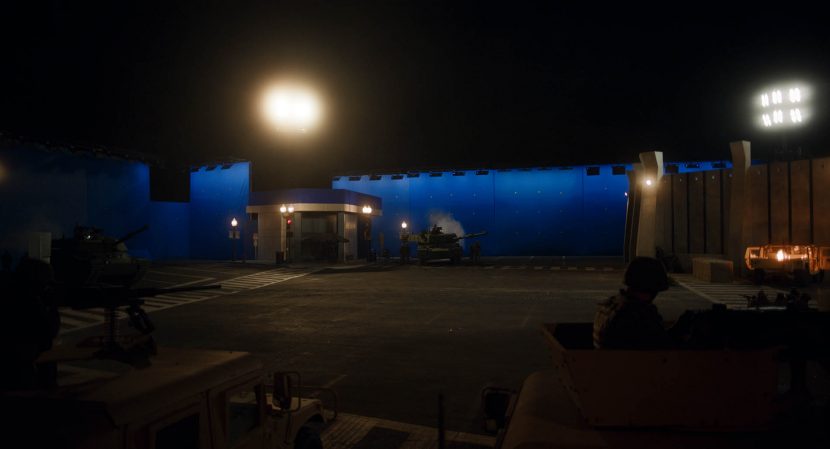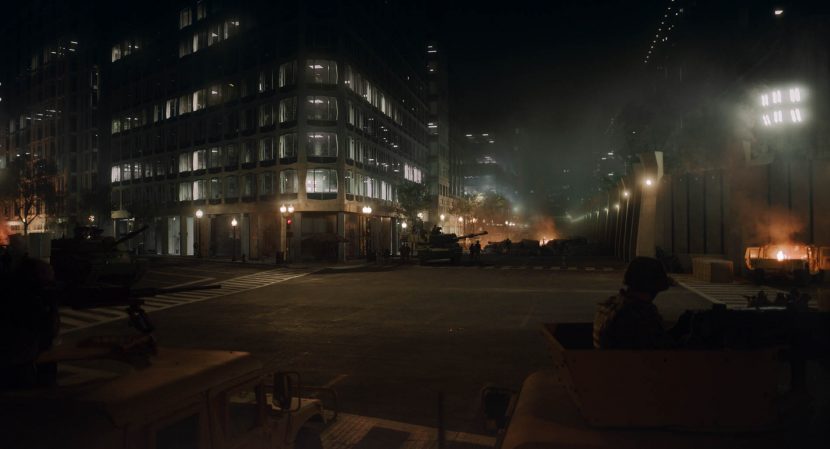Civil War takes audiences into a fractured America, exploring themes of division and unity against a reimagined Washington, D.C. The VFX approach focused on photorealism and narrative integration. Framestore’s David Simpson, as Production VFX Supervisor, collaborated closely with director Alex Garland, DOP Rob Hardy, and Production Designer Caty Maxey to achieve the film’s gritty, documentary-style aesthetic. The challenge went beyond the scale of the VFX—it was about crafting a city that felt alive and in conflict. Framestore’s ability to push technical boundaries while preserving emotional depth makes Civil War a standout in this year’s VFX-driven films.
“Everything had to feel grounded and lived in,” says Simpson. “Anything remotely ‘Hollywood’ was immediately kicked into touch, and we focused instead on news and documentary footage. It made the research and reference-gathering stage pretty heavy going at times, but the aim was to create a realistic and utterly unsanitized view of war unfolding.”
Framestore’s key aim was to augment and extend the real-life action while enhancing those aspects that would not be safe or practical to accomplish on set or out on location. “The first rule was that, wherever possible, everything should be captured in camera,” says Simpson.
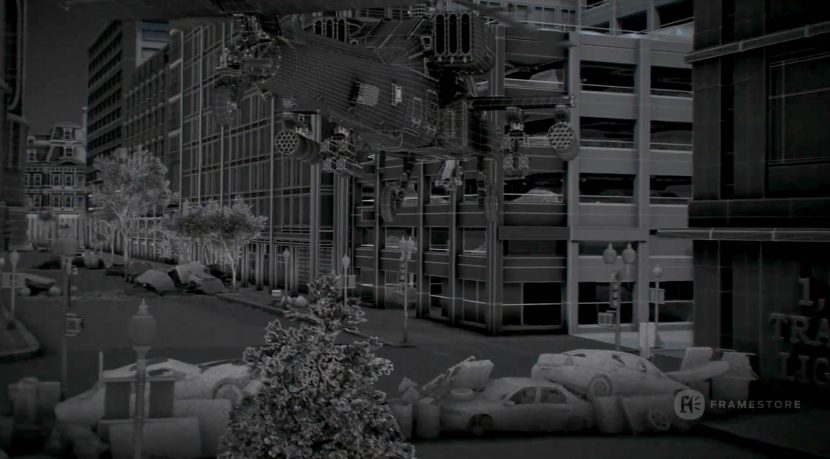
The visual effects for Civil War were a monumental achievement, delivered by a dedicated team of 175 artists at Framestore over the course of 406 days. The scope of their work was staggering, involving the meticulous digital recreation of Washington, D.C., for the film’s intricate and immersive storytelling.
Washington DC: Street by street
Garland, Simpson and Hardy conducted recces of Washington DC to gauge the city and inform plans to find locations in Atlanta that might ‘double’ for the US capital. With no suitable stand-ins found, partial sets were constructed and the VFX team were charged with ‘building out’ the environments. “In those scenes involving close-quarters clashes, you’re seeing a blend of CG and practical sets,” says Simpson. “Everything above the ground floor of those buildings has been built in CG.”
The team brought to life 13 miles of the city, complete with 75 iconic landmarks, such as the Capitol and Washington Monument, to provide an authentic and recognizable backdrop. This ambitious endeavor required not only a deep understanding of the city’s geography but also an exceptional level of detail to ensure the audience felt fully immersed in the environment.
In addition to its landmarks, the digital cityscape included 887 miles of road, 3,736 buildings, and a host of smaller yet essential details. The artists modelled 64,191 street lamps, 1,160 traffic lights, and 17,851 trees to populate the urban environment, making it vibrant and believable. The interiors were just as meticulously crafted, with over half a million pieces of office furniture (519,066 to be precise) designed to add depth to the film’s narrative settings. This level of detail exemplifies Framestore’s commitment to crafting visual effects that serve the story while pushing the boundaries of what is possible in digital artistry. The sheer scale and precision of their work set a new benchmark in VFX, showcasing the power of technology and creativity to transport audiences into a meticulously crafted world.
In keeping with the brief to create a living, breathing, immersive world for Civil War’s action, the Framestore team went into incredible detail for these environment builds. “I was walking home through London one evening, and the city’s sheer lack of uniformity struck me,” says Simpson. “You notice how the offices are lit differently, the fractional changes in design from road to road and individual architectural quirks that break up any given street scene. This is what we sought to tap into: the fractional changes in lighting, building out the interiors of the offices so they weren’t just hollow CG shells but dotted with desk clutter, pot plants and air conditioning units. Your eye doesn’t necessarily register all this detail, but your mind does, and it heightens both the believability of the VFX work and the storytelling itself since you get a sense of the city’s sudden, Mary Celeste-esque abandonment.”
War on the streets
The success of these showcase moments was such that the VFX work expanded ambitiously outwards to the point where Framestore had effectively built a fully CG Washington DC. The city was then dotted with gunfire, digital crowds, flames and columns of smoke to highlight the skirmishes and clashes happening at points around the city. This work helped give a sense of scope and expanse, amplifying the story by highlighting how the drama extended far beyond what was happening to the film’s main cast. Rendering the whole city in CG also had some more practical creative benefits, as Simpson explains: “building Washington ourselves meant we could achieve shots that simply wouldn’t be possible or practical in real life,” he says. “The US Secret Service are obviously somewhat cagey about people flying helicopters close to the White House, for example – if we wanted to do that, we’d need an armed agent onboard, and there’s no way we could have gotten as close as we did. There’s also the issue of the Lincoln Memorial, which, for practical and ethical reasons, we couldn’t blow up!”
If the photoreal cityscapes and internal design of office blocks added to the worldbuilding, so, too, did the finer details. “Everything was based on real-life footage,” explains Simpson. “We had de facto casting sessions for our explosions, using newsreels, citizen journalism and footage from weapons tests. We also needed to know what kind of damage these explosions would do, to streets, to buildings and, most harrowingly, to people. The aim was to strip away any sense of showiness, rendering the reality of war in all its stark, horrifying detail.”
Debuting at SXSW, Civil War was hailed as one of the year’s most startling and visceral films. Framestore was an early collaborator, identifying and deploying the best techniques, technologies and methodologies to achieve Director Alex Garland’s distinctive and uncompromising vision and delivering some 1,000 VFX shots via its studios in London and Mumbai.


